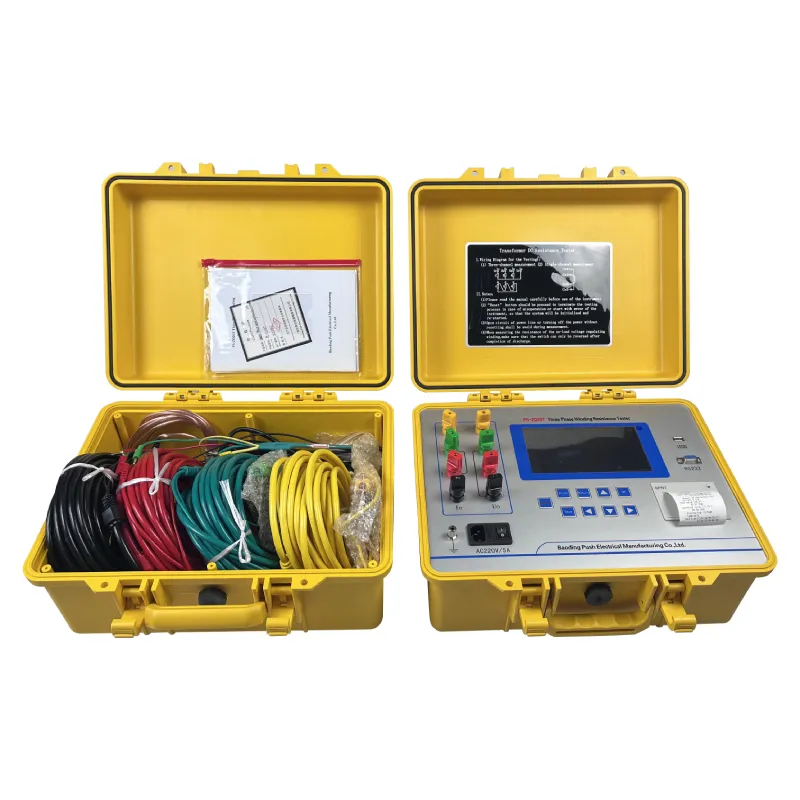 English
English


Understanding the Tan Delta Test for Evaluating Transformer Oil Quality and Performance
Understanding the Tan Delta Test of Transformer Oil
Transformer oil plays a critical role in the operation and efficiency of power transformers. Its primary function is to insulate and cool the transformer while also allowing for the dissipation of heat generated during operation. However, over time, transformer oil can degrade due to various factors such as temperature fluctuations, moisture ingress, and electrical stress. This degradation can lead to a decline in the oil's insulating properties, thereby affecting the overall performance of the transformer. One effective method to assess the condition of transformer oil is the Tan Delta test.
What is the Tan Delta Test?
The Tan Delta test, also known as the power factor test, is a diagnostic tool used to evaluate the dielectric properties of insulation materials, including transformer oil. The test measures the dissipation factor (tan δ) of the oil, which is an indicator of its insulation quality. Essentially, tan δ represents the ratio of the resistive current (loss current) to the capacitive current (displacement current) in the presence of an applied voltage.
In ideal conditions, an insulating material should not conduct electricity; therefore, the losses in the material should be minimal. However, as transformer oil degrades, its insulating properties deteriorate, leading to higher losses and a corresponding increase in the tan delta value. A low tan delta value suggests that the oil is still in good condition, while a high value indicates that the oil's insulating capabilities may be compromised.
Importance of the Tan Delta Test
The Tan Delta test is crucial for several reasons
1. Condition Monitoring Regular testing of transformer oil can provide utilities with valuable insights into the condition of their transformers. An increase in the tan delta value over time can serve as an early warning sign of insulation failure.
2. Risk Mitigation By identifying potential issues early, utilities can schedule maintenance or replacements before a catastrophic failure occurs. This proactive approach can prevent costly downtime and extend the lifespan of the transformer.
tan delta test of transformer oil

3. Quality Control When new oil is introduced to a transformer, the Tan Delta test can be utilized to ensure the quality of the oil. This is especially important when using reclaimed oil, as it may contain impurities that can adversely affect insulation performance.
4. Compliance and Standards Many regulatory bodies and industry standards set requirements for the acceptable limits of tan delta values in transformer oil. By adhering to these standards, utilities can ensure the safety and reliability of their electrical systems.
Conducting the Tan Delta Test
The Tan Delta test is typically conducted using specialized equipment that applies a high voltage to the transformer oil sample. The equipment measures both the capacitive and resistive components of the current flowing through the oil. The ratio of these two components allows for the calculation of the tan delta value.
It is essential to follow proper testing procedures to ensure accurate results. Factors such as temperature, humidity, and the presence of contaminants in the oil can influence the tan delta value, making it important to control these variables during testing.
Interpretation of Results
Once the Tan Delta test is completed, interpreting the results becomes crucial. Generally, a tan delta value below 0.01 is considered acceptable; however, values between 0.01 and 0.05 may indicate the need for further investigation. Values above 0.05 often signal significant deterioration of the transformer oil and may necessitate immediate action, such as an oil change or more extensive maintenance procedures.
Conclusion
The Tan Delta test is a vital tool in the assessment of transformer oil condition and the overall health of transformers. In an era where electrical infrastructure reliability is paramount, routine monitoring of transformer oil through Tan Delta testing can prevent unforeseen failures and costly repairs. By understanding the insulating properties of their transformers and addressing potential issues early, utilities can not only prolong the lifespan of their equipment but also ensure a more reliable power supply for consumers. In the landscape of electrical engineering, the Tan Delta test stands out as an essential practice for maintaining the integrity of transformer assets.
-
Differences between open cup flash point tester and closed cup flash point testerNewsOct.31,2024
-
The Reliable Load Tap ChangerNewsOct.23,2024
-
The Essential Guide to Hipot TestersNewsOct.23,2024
-
The Digital Insulation TesterNewsOct.23,2024
-
The Best Earth Loop Impedance Tester for SaleNewsOct.23,2024
-
Tan Delta Tester--The Essential Tool for Electrical Insulation TestingNewsOct.23,2024





